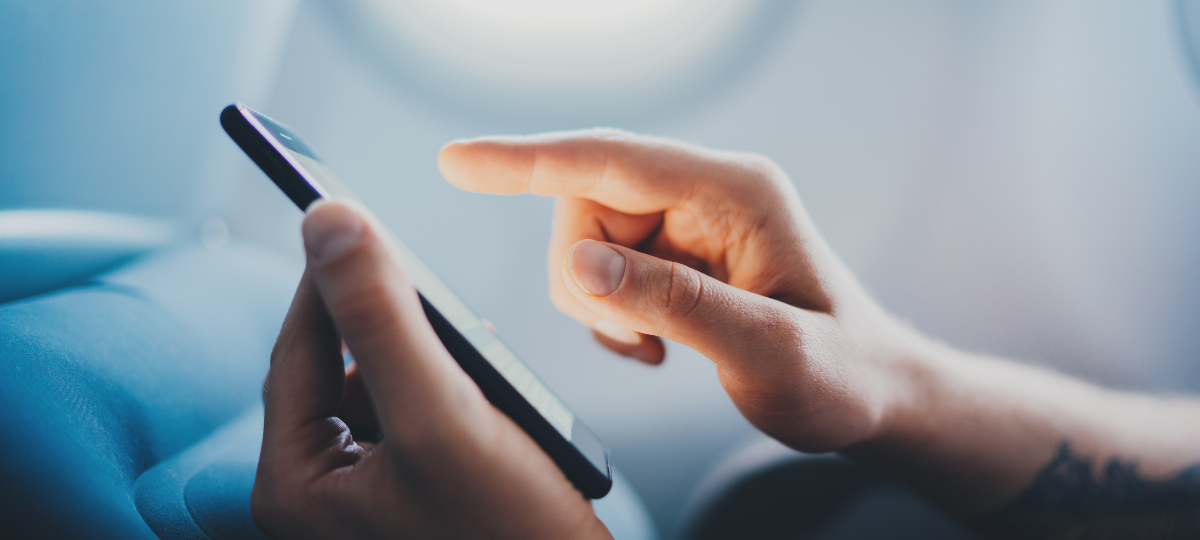Despite these expectations, airplane wifi is incredibly variable, not only from airline to airline, but even from airplane to airplane. In fact, prices and quality have no correlation — making for a confusing landscape for passengers. For instance, Alaska Airlines offers $39.95 air-to-ground wifi that is extremely slow on some flights, while on others it uses satellite-based service that enables superior connectivity at $20 a flight.
Why is service so variable, and what are airlines doing to fix it? B2B research companies are primed to find the answers. NewtonX issued a survey to 100 executives of in-flight wifi providers in order to answer this question. The data and insights in this article are informed by the results of this survey.
Satellite Capabilities and Sponsored Usage: How Airlines Are Financing Plane Upgrades for Free Wifi
The airline industry faces a chicken and egg problem when it comes to in-flight wifi. If they lower prices or offer free internet, then usage rises from 6% to 60% — meaning that overload can quickly become an issue, slowing down service and rendering the free wifi ineffectual. Conversely, free wi-fi is an extremely appealing competitive advantage; surveys show that it ranks ahead of food, legroom, and other amenities in terms of what passengers care about.
Meanwhile, upgrading planes so that they can receive satellite service is extremely expensive. Some airlines are turning to sponsors to cover these costs. For instance, T-Mobile sponsors some Gogo wifi, while JetBlue’s free wifi is sponsored by Amazon. Other airlines have taken a different approach: United, which has satellite-based service on its flights, adjusts its wifi prices based on passenger demand, in order to ensure there’s enough bandwidth for all passengers and that quality remains high.
Even once planes are satellite-ready, overload can still be an issue. This is because numerous planes can compete for bandwidth from the same satellite; it’s not just an issue of 100 passengers on one plane, but an issue of 1,000 passengers on ten planes. Furthermore, this increased demand for satellite has resulted in what we termed a “satellite land grab” from the likes of SpaceX, Astranis, and OneWeb.
Conversely, those planes that haven’t upgraded to satellite offer expensive, slow wifi that attracts complaints from customers. One executive in the survey with NewtonX said that airlines have said their number one in-flight complaint has to do with internet latency.
Higher Usage, Higher Expectations, and Lower Costs: How Are Airlines Going to Keep Up?
The amount of data that any given individual uses keeps going up. Multiple airlines reported that passengers will connect to wifi from two, or even three devices during a flight. A single streamer uses the bandwidth of ten non-streamers. And all of this increases the costs to airlines for offering wifi.
Despite these challenges, the pay-off from offering affordable or free wi-fi can be enormous. Some airlines, such as Alaska, Delta, and Southwest offer free text messaging as a compromise to offering free wifi. Southwest offers a flat fee of $8 per flight to access wifi, while Jetblue offers free wifi to all passengers. Both airlines appeal to budget clientele and younger travelers, so offering affordable internet access is a major competitive advantage.
The bottom line, though, is that offering free wifi is a major investment that large airlines will need to offset in creative ways. Every airline will need to upgrade their entire fleet to be satellite compatible, and will also need to form partnerships to make free wifi a viable offering.

